I. What is Fatty Acid Digestion, Transport, and Mobilization?
Though covering 3 topics in one article may be a little intimidating at first with the amount of information, the interconnectedness of these topics makes them much easier to understand individually when they’re studied in unison together!
The digestion, transport, and mobilization of fatty acids is a bit more unique as these molecules have unfavorable hydrophobic molecular characteristics which make them insoluble in the blood, as opposed to other macromolecules like carbohydrates and proteins.
Though the title mentions fatty acids, we’ll also cover other lipids as well such as cholesterol as they also have these unique transport schemes due to their nonpolar nature. Again, as this is more of a low yield topic, we’ll only cover what’s necessary and keep it as succinct as possible.
II. Fatty Acid and Lipid Breakdown and Movement
As mentioned above, we’ll cover how fatty acids and other lipids are taken in and distributed around the body via covering digestion, transport, and mobilization. Let’s get started!
A. Digestion
As with any ingestion of food, the lipid food particles must be broken down to smaller components to ease the process of absorption, which primarily occur within the small intestine.
Some major enzymes involved in lipid digestion include pancreatic lipase and cholesterol esterase which digest triglycerides and cholesteryl esters, respectively while releasing fatty acids and cholesterol.
Lipid food particles often come in droplets, which is where emulsification aids in digestion. A combination of both bile salts and intestinal mobility increases the surface area of the lipid droplets, giving a larger surface area for digestion.
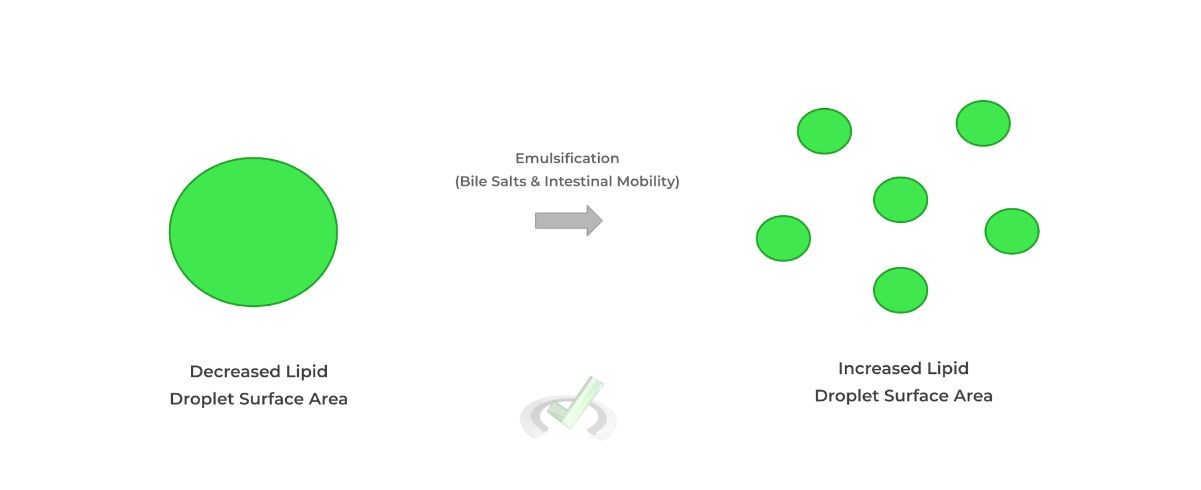
B. Transport
Due to their nonpolar nature, the transport of lipids requires special transport in the blood utilizing lipoproteins, which have 2 components: 1) a hydrophilic, outer component composed of proteins and phospholipids and 2) a hydrophobic, inner core containing the lipid particles.
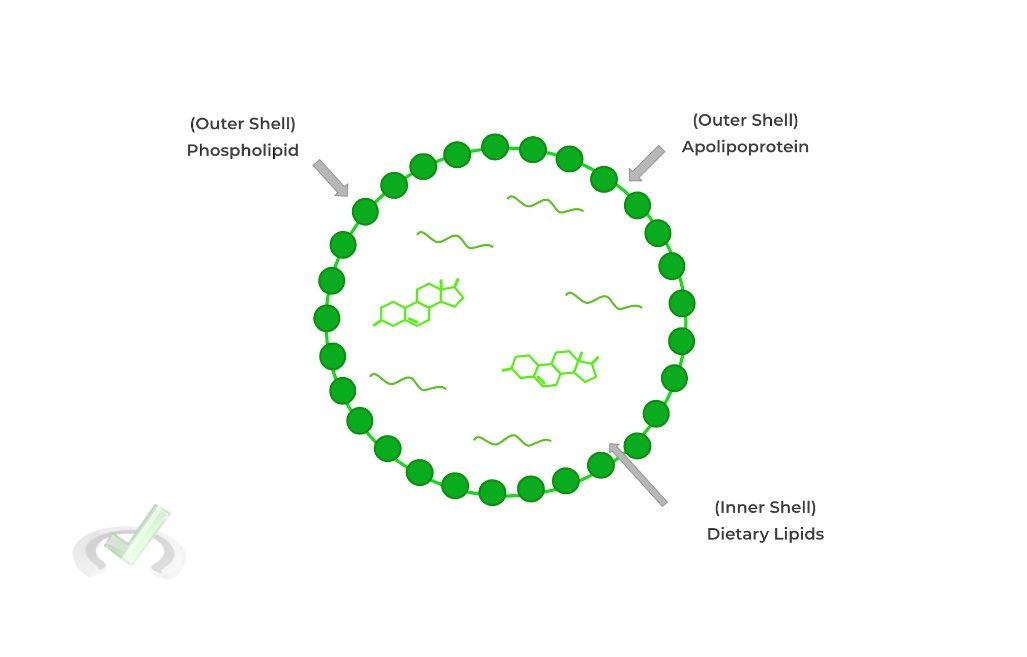
Specifically, the apolipoprotein is simply the protein component of the lipoprotein. It’s when the apolipoprotein is conjugated to lipids that the lipoprotein is formed.
We’ll talk about four main lipoproteins: chylomicrons, very low density lipoproteins (VLDL), low density lipoproteins (LDL), and high density lipoproteins (HDL).
The “density” portion refers to the percentage of protein composition in the lipoprotein, where the chylomicrons have the LOWEST percentage of protein composition while HDLs have the HIGHEST percentage!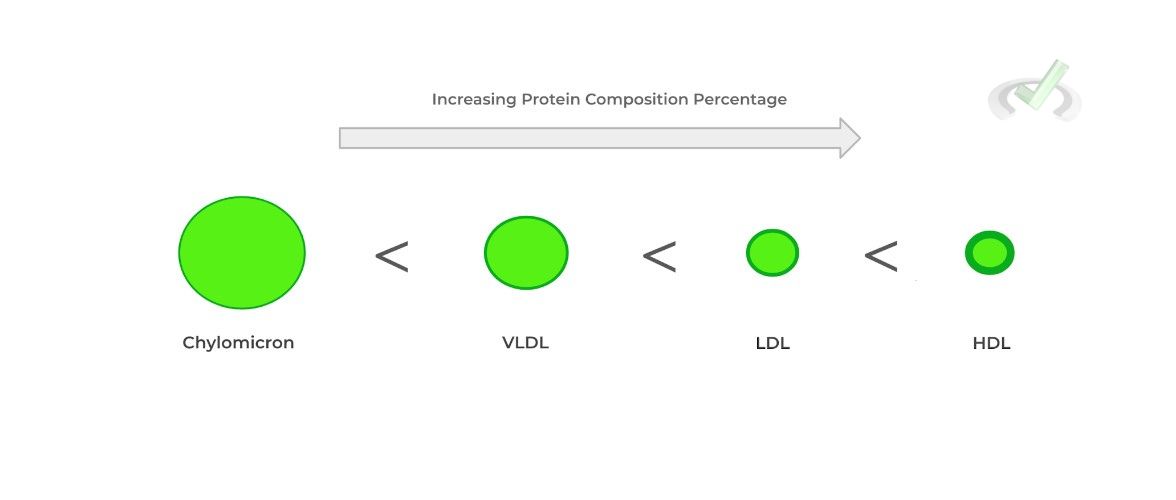
I. Chylomicrons and VLDL
These lipoproteins are the ones with a very low percentage of apolipoproteins in their composition, as shown in the figure above!
However, they both have similar function in primarily carrying triglycerides from the liver and small intestines to the tissues!

II. LDL and HDL
These lipoproteins generally have a higher percentage of apolipoproteins that compose their structure and have similar function in primarily carrying cholesterol.
However, they differ in their delivery location: LDLs deliver cholesterol to the tissues while HDLs deliver cholesterol to the liver for metabolization.
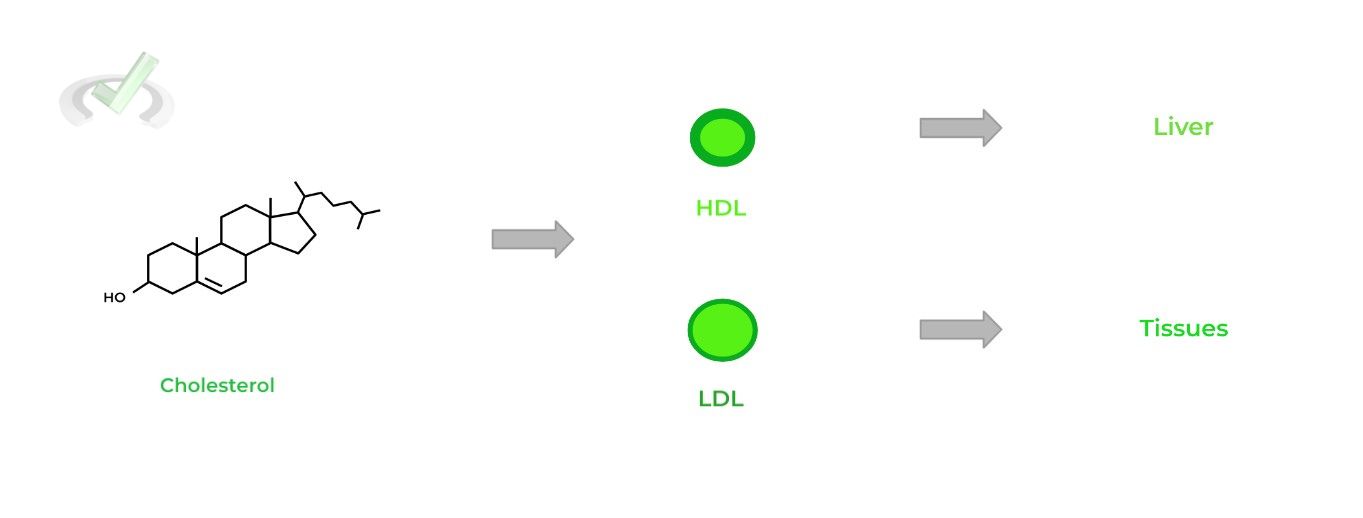
C. Mobilization
When needed for energy, these lipids can be mobilized to other tissues primarily through the hydrolysis of triglycerides! 2 similar, but distinct, lipases involved in lipid mobilization are hormone sensitive lipase (HSL) and lipoprotein lipase (LPL).
They differ in the location of triglycerides hydrolysis: HSL hydrolyzes intracellular triglycerides while LPL hydrolyzes the triglycerides present in lipoproteins.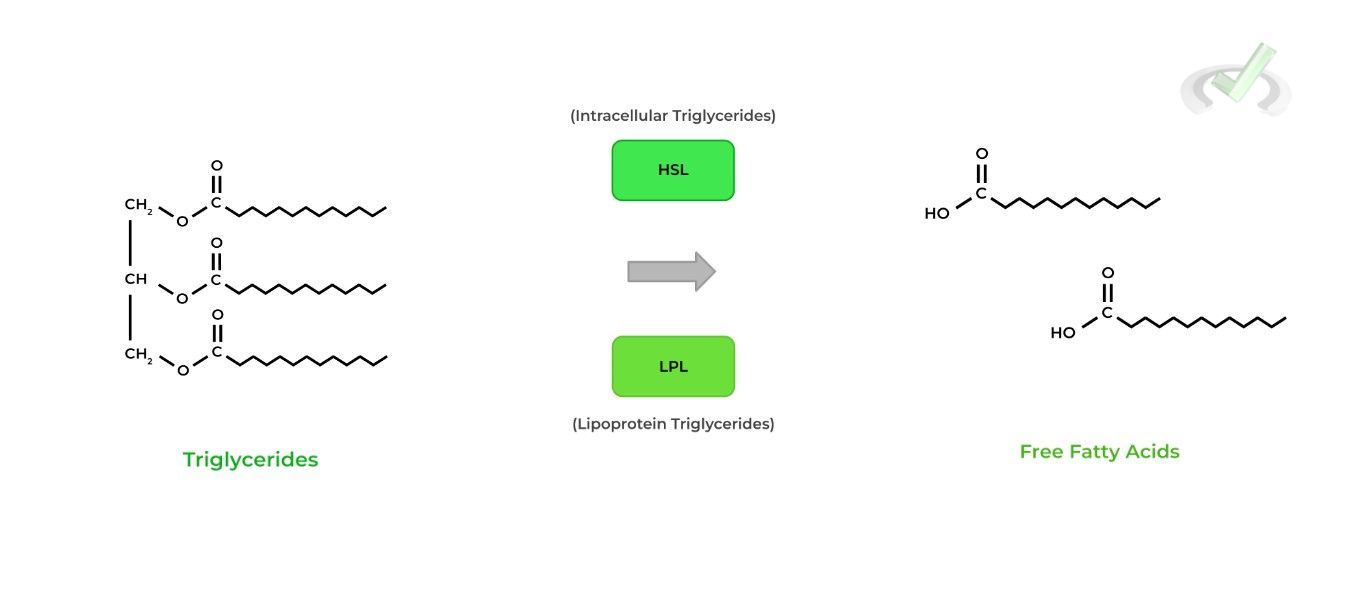
LPLs usually line the endothelial cells of blood vessels, which allows for the uptake of the fatty acids into the tissues after hydrolysis.
III. Bridge/Overlap
As indicated by its name, hormone sensitive lipase can be actively stimulated by various hormones! Let’s look at a couple and see the physiological rationale behind them!
I. Stimulatory Hormones for Hormone Sensitive Lipase
Primarily, epinephrine is one of the main hormones which stimulates HSL! In addition, HSL is also actively stimulated by drops in insulin levels. From a physiological standpoint, this should make sense!
When the body is in a state where energy is needed, such as in sympathetic stimulation, the release of epinephrine should result in the increase of available energy sources. In this case, it comes from the free fatty acids.
IV. Wrap Up/Key Terms
Let’s take this time to wrap up & concisely summarize what we covered above in the article!
A. Digestion
In order to break down lipids into smaller components to aid in small intestine absorption, enzymes including pancreatic lipase and cholesteryl esterase breakdown triglycerides and cholesteryl esters , respectively to release fatty acids and cholesterol.
Emulsification via bile salts and intestinal mobility increase the surface area of lipid droplets, also aiding in digestion.B. Transport
Because of their nonpolar nature, lipids must be transported in the blood via specialized lipoproteins, which have a hydrophilic outer shell composed of apolipoproteins and phospholipids and a hydrophobic, inner core containing lipids.
I. Chylomicrons and VLDL
These 2 lipoproteins have a very low percentage of apolipoprotein in their composition compared to the other 2 and primarily carry triglycerides to the tissue.
II. LDL and HDL
These 2 lipoproteins have a higher percentage of apolipoproteins in their composition compared to the other 2 and primarily carry cholesterol!
They differ, however, in their delivery locations: LDL delivers cholesterol to the tissues while HDL delivers cholesterol to the liver for metabolism.C. Mobilization
When energy is needed, lipids can be mobilized to other tissues primarily through triglyceride hydrolysis to be utilized as energy! 2 critical lipases for this include hormone sensitive lipase (HSL) and lipoprotein lipase (LPL).
They also differ in the location of triglyceride hydrolysis: HSL hydrolyzes intracellular triglycerides while LPL hydrolyzes triglycerides present in lipoproteins.V. Practice
Take a look at these practice questions to see and solidify your understanding!
Sample Practice Question 1
When hormone sensitive lipase is stimulated, what type of bond is broken?
A. Ester
B. Amide
C. Peptide
D. Hydrogen
Ans. A
Recall that hormone sensitive lipase is responsible for breaking down intracellular triglyceride molecules. These molecules have an ester bond which was generated when the alcohol groups on the glycerol molecule substituted the fatty acids’ -OH group on the carboxylic acid.
Sample Practice Question 2
Fill in the blanks. When needed for energy, triglycerides can be transported from the liver primarily by _____________ and be broken down by ____________ before being uptaken by the tissue.
A. HDL, HSL
B. HDL, LPL
C. Chylomicrons, HSL
D. Chylomicrons, LPL
Ans. D
Recall that chylomicrons and VLDL are the lipoproteins primarily transporting triglycerides in the bloodstream. Furthermore, it’s lipoprotein lipase that will allow for the hydrolysis of the triglycerides within the lipoproteins, before being uptake by the tissues to be used for energy.







 To help you achieve your goal MCAT score, we take turns hosting these
To help you achieve your goal MCAT score, we take turns hosting these 





















 reviews on TrustPilot
reviews on TrustPilot